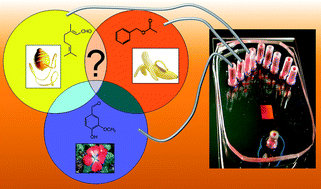The mammalian olfactory system is able to discriminate among tens of thousands of odorant molecules. In mice, each odorant is sensed by a small subset of the approximately 1000 odorant receptor (OR) types, with one OR gene expressed by each olfactory sensory neuron (OSN). However, the sum of the large repertoire of OR–OSN types and difficulties with heterologous expression have made it almost impossible to analyze odorant-responsiveness across all OR–OSN types. We have developed a microfluidic approach that allowed us to screen over 20 000 single cells at once in microwells. By using calcium imaging, we were able to detect and analyze odorant responses of about 2900 OSNs simultaneously. Importantly, this technique allows for both the detection of rare responding OSNs as well as the identification of OSN populations broadly responsive to odorants of unrelated structures. This technique is generally applicable for screening large numbers of single cells and should help to characterize rare cell behaviors in fields such as toxicology, pharmacology, and cancer research.

You have access to this article
 Please wait while we load your content...
Something went wrong. Try again?
Please wait while we load your content...
Something went wrong. Try again?


 Please wait while we load your content...
Please wait while we load your content...